#maria vetsera
Explore tagged Tumblr posts
Text
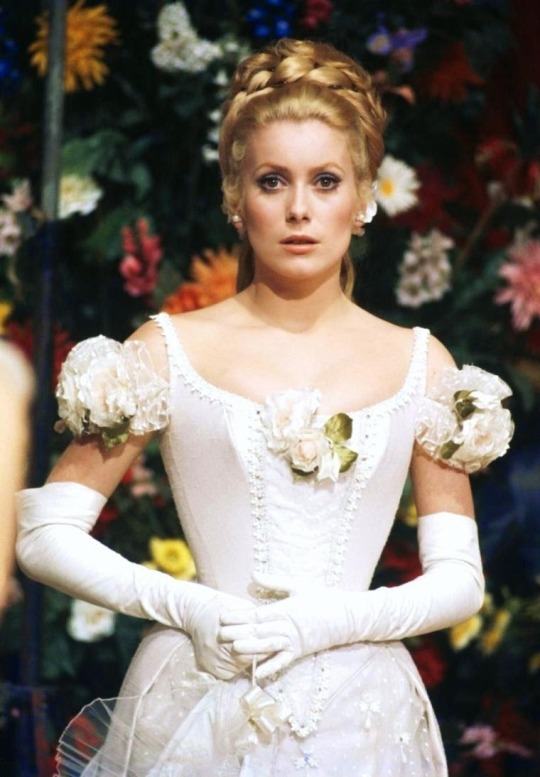


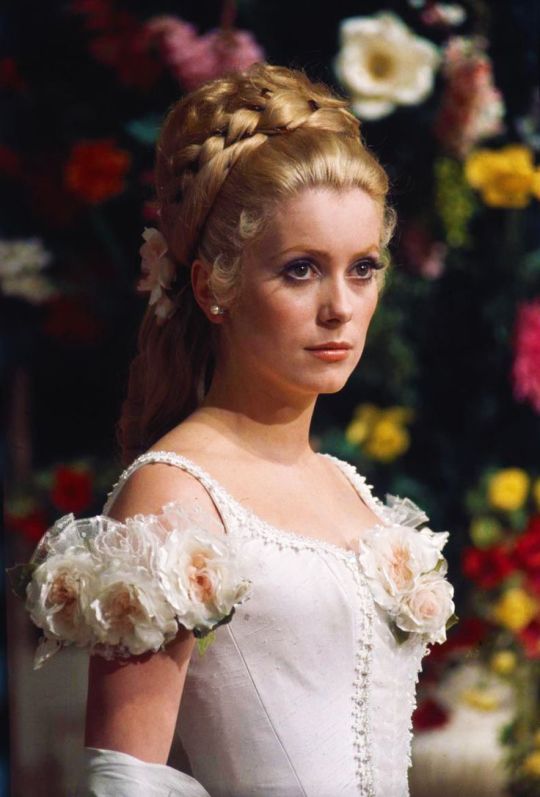

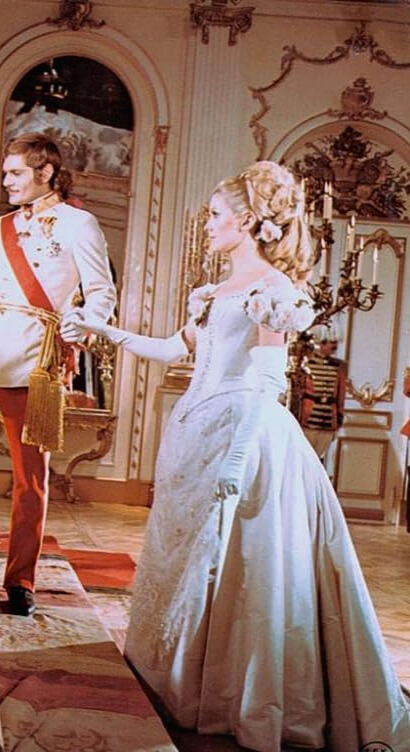
Maria Vetsera (Catherine Deneuve) White ballgown.. Mayerling (1968).. Costume by Marcel Escoffier.
26 notes
·
View notes
Text




Étoile Dorothée Gilbert as Baronesse Mary Vetsera and Étoile Hugo Marchand as Crown Prince Rudolf in Mayerling, choreography by Sir Kenneth MacMillan, music by Franz Liszt, at Palais Garnier.
Photographer: Maria-Helena Buckley.
#Dorothée Gilbert#hugo marchand#mayerling#franz liszt#kenneth macmillan#ballet#paris opera ballet#opéra de paris#palais garnier#favourite dancer#crown prince rudolf
10 notes
·
View notes
Text
heyyy guys so today i randomly found a bootlegged dvd copy of the insanely rare movie Mayerling (1957) starring Audrey Hepburn in a random thrift store and almost cried because this is what dreams are made of. then i ripped the dvd and blew it up to 1080p and uploaded it to the internet if anyone wanna watch it with me :-D
#mind you the quality is still piss but i think this is the best im gonna find in my lifetime so wahooo.#audrey hepburn#mel ferrer#mayerling#mayerling 1957
24 notes
·
View notes
Text
How many have you read?
The IDC estimates that most people will only read 2 books out of the 25 listed below. Reblog this and tag with how many titles you've read.
1 Hamlet - William Shakespeare
2 The Complete Works of William Shakespeare
3 I Am Malala - Malala Yousafzai, Christina Lamb
4 Emmy - Ruth Boswell
5 The Wild Swans - HC Andersen
6 Phantom - Susan Kay
7 The Secret History - Donna Tartt
8 Maskerade - Terry Pratchett
9 Die Österreichisch-Ungarische Monarchie in Wort und Bild, Vol. 6: Ungarn - Rudolf Crown Prince of Austria
10 You & Your Cat. The Ultimate Guide to Cats, their Health, Care and Behaviour - David Taylor
11 The Complete Works of William Shakespeare
12 The Phantom of Manhattan - Frederick Forsyth
13 Ulysses - James Joyce
14 The Epic of Gilgamesh
15 A Journey in the East - Crown Prince Rudolf of Austria
16 Tenshi no Hitsugi: Ave Maria (Angel's Coffin) - You Higuri
17 My Sister The Vampire: Fangtastic! - Sienna Mercer
18 Love and Death in Vienna: The Story of Crown Prince Rudolf of Austria and Mary Vetsera - Bunny Paine-Clemes
19 Flights of Angels - Fitz Rove
20 The Magician's Nephew - CS Lewis
21 Metahistory: The Historical Imagination in Nineteenth-century Europe - Hayden White
22 Before I Fall - Lauren Oliver
23 Future Documentation Chapter One, Limited Edition - Máté Kamarás (little booklet)
24 Otavan ISO Musiikkitietosanakirja: Hakemisto (I use this as a mouse pad)
25 The Complete Works of William Shakespeare
#disclaimer not making fun of ppl who rb the list - its fun to calculate how many you've read#just making fun of the list itself#books#literature#shitpost#parody
17 notes
·
View notes
Text
BLL - follow-up
kicsit follow-up-olom ezt a BLL témát; ma is azt néztem; bár éppen eléggé el vagyok kenődve (mindentől)
(...)
***
#barguzin
na, szóval volt pár cikk a szeptemberi Dragomán György fb poszt alatt kommentben; az egyik ez volt:

(ezt úgy tűnik, hogy arcanumban később nem kerestem meg; úgyhogy csak így van meg)
innen jön egyébként Barátosi Baráth Benedek; itt van megemlítve
fotó:

BLL pedig így nézett ki (1940-ben)
meg a cikk infóinak kezdtem utána menni
arcanum hozzáférésem most nincsen, úgyhogy csak anélkül lesznek itt a találatok; de azért pár érdekes dolgot így is találtam
-
egyrészt az iskolái; hogy előtte hova járt, azt nem tudom; de találtam két ilyet:


maguk az iskolai értesítők így nem látszanak, persze; és ezt le kell ellenőrizni; de ez itt az, szerintem (tutira) (neve, születési hely, idő stimmel), hogy ő itt a diákok között van feltüntetve, 1907-ben és 1910-ben; 1910-ben volt 18 éves; akkor végezhetett
amúgy mintha ezt az iskoláját ő maga nem reklámozná magáról
jó iskolának tűnik:

ez alapján 1910-ben ő diák volt, ebben az aradi felső kereskedelmi iskolában
apja egyébként olyan, mintha lelkész lett volna
ebbe az iskolába kellett tandíjat fizetni; lehet, hogy valami módosabb rokona befizette (?)
*
1911 és 1913 közötti időszakból nem találtam semmit sem
a cikk alapján az érettségi után Kufstein-be ment, és ott elvette feleségül Vetscherra Saroltát
ezt én eléggé fenntartásokkal kezelném
semmi olyan infót nem találtam, ami ezt bármilyen szintem megerősítené
helyben biztos ki lehetne deríteni, hogy élt-e anno egy Vetscherra Sarolta Kufstein-ben
nekem a gugli csak azt adta ki, hogy a neve hasonlít a Vetsera-ra
szerintem a nevet innen vette:
Kufstein vára pedig egy nevezetes hely: elég sokan raboskodtak benne:
Vetscherra/Vetserra-ra, Kufstein-re nekem csak ezt sikerült kigugliznom
*
1912-ben viszont biztos, hogy megjelent a verseskötete; 80 oldalas, elég vastag; meg kéne nézni mindenképpen, hogy mi van benne; biztos valami életrajz is van benne; plusz valami infó arról, hogy mégis hogy sikerült ezt összehoznia 20 évesen
*
szóval hogy 1911-13-ban hol volt, azt nem tudom; lehet, hogy tényleg Kufstein-ben, de ennek utána kéne nézni
1910-ben még az iskolai névsorban
*
tegnap még néztem tovább a tászoktetőt is
1913-14 előtt nem volt ismert
hogy a helyiek ismerték-e, passz; de mintha ők sem
Lénárt Lajosként azt mondja, hogy Gyergyószentmiklósra járt iskolába, lakott ott, járt oda haza
ha az apja lelkész volt, akkor költözhettek; lehet, hogy valamikor gyerekként lakott ott
szóval tászok-tetőhöz lehet, hogy saját jogon is érzett közt; nem csak BBB mesélt neki róla
de foglalkozni vele ő csak később kezdett el (amikor publikálja is, az 1940-es években)
*
ez a Pesity Imre, aki összegrundolja neki a 25 éves emlékkönyvet, meg az iskolába is ő vitte be, nyugalmazott lelkész, és rokona; ez a fenti cikkben van benne
Jager Iréne is valami rokon, aki aztán a felesége (szintén a cikkben van benne)
de nem 1934-ben házasodnak össze, illetve nem akkor költözik Kerekegyházára, hanem sokkal korábban
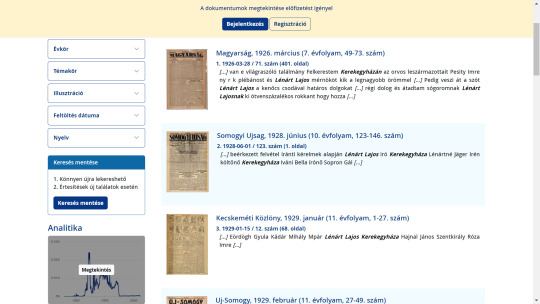
első cikk
1826-os Magyarságban megjelenik egy cikk róluk; valami csodakenőcsöt népszerűsítenek
ekkor már Kerekegyházán élnek
Lénárt Lajos is, Pesity Imre is
meg meg is van már nősülve
Andrássy Gyula utca 8 volt a házszáma (Vadászújságban van benne)
az pedig ez a ház:

a kis ház, szemben
(az egyik cikkben egyébként pont ilyennek írják le a házat, amiben lakik)

itt a cÍme
*
kábé ennyi, ennyi jutott most az eszembe
*
0 notes
Photo










Mayerling (1936)
The film is based on the real-life story of Crown Prince Rudolf of Austria, his affair with the 17-year-old Baroness Maria Vetsera and their tragic end at Mayerling
#Mayerling 1936#historical drama film#French historical drama film#Anatole Litvak#Crown Prince Rudolf of Austria#Baroness Maria Vetsera#Maria Vetsera#Mayerling#old movies#classic movies#Charles Boyer#Danielle Darrieux#movies to watch#black and white movies#movies about marriage affair#drama film#dramatic love story#dramatic love#period drama film#period drama
23 notes
·
View notes
Text


Catherine Deneuve in Mayerling (1968) dir. Terrance Young
#catherine deneuve#vintage#retro#old hollywood#terrance young#mayerling#60s#60s fashion#60s style#french#maria vetsera
9 notes
·
View notes
Photo










Common Royal & Noble Names: Marie / Mary / Maria
Mary of Burgundy
Princess Maria Eleonora of Brandenburg
Archduchess Maria Theresia of Austria
Archduchess Maria Anna of Austria
Archduchess Maria Antonia of Austria
Archduchess Marie Leopoldine of Austria
Princess Marie of Prussia
Marie in Bavaria
Baroness Marie Louise of Wallersee
Baroness Marie Vetsera
#historyedit#women in history#historical women#maria theresia#marie antoinette#mary of burgundy#noble names#mary vetsera#marie louise of wallersee#Marie in Bavaria#Marie Leopoldine of Austria#Maria Anna of Austria#Maria Antonia of Austria#Maria Eleonora of Brandenburg#names
219 notes
·
View notes
Photo


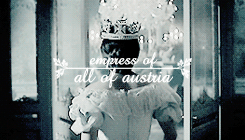





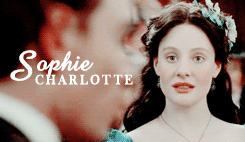

Empress Sissi and Her Sisters
H e l e n e Caroline : the eldest of the sisters, Helene (affectionately referred to as Nene), possessed many of the qualities ‘ideal’ in women of the time. She was attractive and polite, strictly pious, and good-natured. No better example of this is shown than when she and her sister Elisabeth- the future empress- traveled to Austria to meet the highest ranking of her many suitors. As the elder daughter of Maximilian von Wittelsbach, Duke in Bavaria, Helene was considered at 20 Germany’s most eligible bride in the beginning of the 1850s. As such, she was the top candidate to be her cousin’s - and emperor of the Austrian Empire - Franz Joseph’s bride. However, when the dashing young Franz met Helen, she failed to live up to the expectations his ambassadors had aroused. Instead Franz fell head over heals in love with her younger sister, Sissi, who was only fifteen at the time, and the following spring the two were wed. The jilted Helene was required not only to smile graciously at her sister’s wedding; she had to curtsey as well, despite having fallen into a deep depression. However, Helene would later go on to be introduced - and eventually married - to the hereditary prince of Thurn a Taxis, leading to a much happier life than that of her younger sister.
Empress E l i z a b e t h : commonly known as Sissi, Elizabeth would become the iconic Empress of Austria upon her marriage to Franz Joseph at the age of 16. The union thrust her into the much more formal Habsburg court life, (the contrast especially stark next to her informal upbringing) for which she was unprepared and which she found awful and uncongenial. To add to her difficulty adapting, early on she was at odds with her mother-in-law, who upon the birth of Sissi’s first child, not only named the child Sophie (after herself) without consulting the mother, but took complete charge of the baby, refusing to allow Elisabeth to breastfeed or otherwise care for her own child. When a second daughter, Gisela, was born a year later, she took that baby away from Elisabeth as well. The death of her only son Rudolf, and his mistress Mary Vetsera, in a murder–suicide at his hunting lodge at Mayerling in 1889 was a blow from which Elisabeth never recovered. She withdrew from court duties and travelled widely, unaccompanied by her family. Moreover, she was obsessively concerned with maintaining her youthful figure and beauty, which was already legendary during her life. While travelling in Geneva in 1898, she was stabbed to death by an Italian anarchist named Luigi Lucheni. Elisabeth was the longest serving Empress of Austria, at 44 years.
M a r i a Sophie : Similarly to her sister Sissi, Maria’s hand was also sought after young for the timer period, and in the winter of 1857, at the age of 16, Marie’s hand was pursued and rewarded to Francis II, the Crown Prince to the kingdom of the Two Sicilies. However, unlike her sister, the marriage was strictly political, as Ferdinand wished to ally himself with the Emperor of Austria (her brother-in-law) a powerful fellow absolutist since his kingdom was being threatened by revolutionary forces. Within a year of marriage, upon the death of the king, her father-in-law, her husband ascended to the throne as Francis II of the Two Sicilies, and Maria Sophie became queen of a realm that was shortly to be overwhelmed by the forces of Giuseppe Garibaldi and Piedmontese army. Fleeing, she sought refuge in the strong coastal fortress of Geata. Still, during the Siege of Gaeta in late 1860 and early 1861, the forces of Victor Emmanuel II bombarded and eventually overcame the defenders. However, it was this brief “last stand of the Bourbons” that gained Maria Sophia the reputation of the strong “warrior queen” that stayed with her for the rest of her life. She was tireless in her efforts to rally the defenders, giving them her own food, caring for the wounded, and daring the attackers to come within range of the fortress cannon. Throughout the life of her unhappy marriage, her wealth and privilege were, to a certain extent, overshadowed by other personal tragedies. While in exile in Rome, Maria fell in love with another man, (supposedly with an officer of the papal guard) and became pregnant by him. At the news, she retreated to her parents’ home, where a family council decided that she must give birth in secret to prevent scandal. Upon the child’s arrival Maria Sophia was forced to promise that she would never see her daughter again.
M a t h i l d e Ludovika : Like her elder sister Maria, Mathilde’s life would follow perpendicularly. On 5 June 1861, Mathilde married Lodovico, Count of Trani. He was heir presumptive to his older half-brother Francis II of the Two Sicilies, who married to aforementioned older sister Marie Sophie. Mathilde was seventeen years old at the time and the groom was twenty-two. They had one daughter. Allegedly, Mathilde also had an affair from which she became pregnant, only this time with a Spanish diplomat by the name of Salvador Bermúdez de Castro, who was a duke in his own right. By him she was said to have had another daughter - who like her sister, she also never met - named Maria.
S o p h i e Charlotte : Like all her sisters, Sophie was a much sought after marriage candidate, with many potential (and powerful) suitors vying for her hand. Still, she refused them all and as thus, was sent to stay with her aunt, Amalie Auguste of Bavaria, then the Queen of Saxony. It was in Saxony Sophie Charlotte met Ferdinand d'Orléans, Duke of Alençon - and grandson of the late Louis Philippe. Soon after, the two married. Reportedly, she had a good relationship with her husband as well as with her sister-in-law Marguerite Adélaïde d'Orléans, wife of Władysław Czartoryski. However, Sophie did not have an overly good relationship with her father-in-law, the widowed Duke of Nemours. She was also the favorite sister of her elder sibling, the Empress Sissi. Sophie died heriocly in a fire at the Bazar de la Charité in Paris on 4 May 1897 when she was 50 years old. She had refused rescue attempts, insisting that all the girls working at the bazaar be saved first. Attempts to have her body identified by her personal maid having failed, her dentist, M. Lavanport, was called in. After two hours examining various bodies he identified hers on the basis of her gold fillings.
#perioddramaedit#historyedit#weloveperioddrama#austrian history#italian history#spanish history#bavarian history#german history#19th century#sissi#elisabeth of austria#our edits#by gabrielle#this is rlly long whoops#sisters series
788 notes
·
View notes
Note
Maria Larish von Wallersee really just says the wildest shit huh.
Von Mitis mentions a story she told in her memoirs about a mysterious casket (whoo!) that she got from crown prince Rudolf, who said that if its contents became known, he'd lose his head. She was supposed to give said casket to the person who gives her a password, said person being Johan Orth, for some reason (even though him and Rudolf didn't get along, like at all). That Johan Orth, who was conveniently lost on sea like a year after Rudolf's death. Even Von Mitis suggests that she was covering her ass for the fact that she kinda, sorta, not really was implicated in Rudolf's death, because she supported his relationship with Mary Vetsera.
So many commonly accepted facts about Elisabeth and her family can be traced back to her wacky memoirs, it's crazy. When I read them I was so surprised because there was practically no new information to me, I had already read it (many times without citation) in other books.
I think it was believed that Rudolf and Johann were friends solely because they were the progressive Habsburgs and around the same age (in the 2006 miniseries Johann appears in some scenes and is Rudolf's bestie), even though the actual evidence show they didn't like each other. Marie Larisch probably thought that as well, or thought it didn't matter because it's not like either guy was going to deny it.
When Larisch's role as a go-between Rudolf and Mary Vetsera came to light she was completely ostracized by the imperial family, so it's not surprising that she retaliated by writing a book in which she was an innocent victim who was used by her aunt and cousin. She implies every time she can that Elisabeth had many lovers, and can't stress enough in how she didn't like Rudolf and he was mean to her (funnily she even states that she disliked Rudolf ever since she met him when they were sixteen, but according to one of Elisabeth's ladies-in-waiting who was also present they in fact had flirted lol). The fact that even historians like Brigitte Hamann quoted her with little criticism is baffling.
#also rudolf was super biased against the ''italian'' habsburgs aka the tuscan branch#and he didn't want valerie to marry archduke franz salvator (johann's nephew)#btw unfun fact about johann orth: he dissapeared (and likely died) in argentinian sea#marie von wallersee countess larisch#crown prince rudolf of austria#archduke johann salvator of austria-tuscany#asks
13 notes
·
View notes
Text
An unintentional discovery of music for A NOBLE SOUL
So I had my extensive music collection on random as I was editing A Noble Soul last night... and then a track from the musical THE SCARLET PIMPERNEL came on - “Where’s the Girl?”
And I suddenly stopped and listened to the lyrics, and realized I had tripped over a piece that really encapsulated Heine’s perception of TaraLeila. Mind you, I do not ship these two - they’ve never been romantically involved, nor will they be... but some people do make a lasting impression on you in ways that you can’t always understand.
In his case, however, it’s less the idea that he’s trying to remind her of who she used to be (as Chauvelin is doing to Marguerite here in the song), and more the idea that they only ever met once (though they’ve written often in the five years since), and so a part of him still can’t believe she was real.
I remember days full of restlessness and fury I remember nights that were drunk on dreams I remember someone who hungered for the glory I remember her, but it seems she's gone
In my mind, this is Heine lying awake in bed one night, thinking of her.
Where's the girl? Where's the girl with the blaze in her eyes? Where's the girl with that gaze of surprise? Now and then I still dream she's beside me Where's the girl who could turn on the edge of a knife? Where's the girl who was burning for life? I can still feel her breathing beside me
She made quite the impression during that fight at Maria Vetsera...
And I know she remembers how fearless it feels To take off with the wind at her heels She and I took this world like a storm Come again! Let the girl in your heart tumble free Bring your renegade heart home to me In the dark of the morning, I'll warm you, I'll rouse you
Again, since I don’t ship the two of them, I see this more as how he just wishes she’d come back to Granzreich.
Marguerite, don't forget I know who you are We were cut from the same surly star Like two jewels in the sky sharing fire
Where's the girl so alive and still aching for more? We had dreams that were worth dying for We were caught in the eye of the storm Come again! Let the girl in your heart tumble free Bring your renegade heart home to me In the dark of the morning, I'll warm you, I'll rouse you
In some ways, they ARE a lot alike. They believe passionately in what they do, pursue their vocations with incredible dedication, and, as different as those callings are, they are both willing to die for them.
Where's the girl? Is she gazing at me with surprise? Do I still see that blaze in her eyes? Am I dreaming, or is she beside me now?
The scene I envision with this last verse is Heine staring into the dark, half-dreaming/half-awake, and imagining her watching over him as he sleeps... not quite sure if she’s really there, before closing his eyes and falling asleep once more.
#the royal tutor#oushitsu kyoushi haine#fanfiction#writing#a noble soul#heine wittgenstein#taraleila macintyre
2 notes
·
View notes
Text
Che Guevara also had a piece of France on her head
Che Guevara also had a piece of France on her head
[ad_1]
The last French Beret manufacturers were almost extinct. But in recent years, two entrepreneurs have ventured into traditional manufacturing. Despite cheap competition from Asia, they are growing continuously.
Catherine Deneuve in the role of Maria Vetsera in the film "Mayerling" from 1968.
Heritage Images / Keystone
Almost three years ago, a boutique opened in a…
View On WordPress
0 notes
Text
Elisabeth das Musical exposition/setting notes
Back when I was translating the ‘92 Vienna rehearsal footage to English I ended up digging deeper than I probably should have into lyrics, because I was kinda fascinated with how precisely you could pinpoint some of the songs in time that way.
I ended up including an extremely short summary of...fun trivia I learned as footnotes in my yt videos for Americans and other aliens (...kidding. kidding! Not like I really remember what was up with Spring of Nations either other than ‘Poland was there too’...) but since a) like nobody watches ‘92 Elisabeth b) if they do they are almost guaranteed not to read video descriptions anyway, I finally decided to repost this here.
Or, you know, you can check out @land-of-blitheness-and-catharsis Vienna Revival Elisabeth translations for some way more entertaining background comments.
PROLOG
[1] Luigi Lucheni (1873-1910) Italian anarchist famous for assassinating Empress Elisabeth of Austria in 1898. Died in 1910 by hanging himself in his cell while serving a life sentence in Geneva. Curiously enough, his head had been preserved in formaldehyde and only buried in 2000, 90 years after his death.
[2] Grammar bonus in case you live under a rock: German is a language with what is known as grammatical gender, effectively making the noun 'death' come with built-in male pronouns unless stated otherwise.
[3] "Why not? She loved Heinrich Heine!" Heinrich Heine (1797 – 1856) Born to a Jewish family but later converted to Christianity, German poet, journalist, essayist, and literary critic. Elisabeth was something of a fan, to put it mildly.
WIE DU
[4] "In this case, it's impossible." Elisabeth absolutely can't come with her father because, according to the libretto, he is actually on his way to spend a night with an actress in Monachium.
[5] "...with a zither under one arm" The flat, black box Elisabeth doesn't want to give back to her father is indeed a zither case.
JEDEM GIBT ER DAS SEINE
[6] Franz-Joseph I of Austria (1830 – 1916) The oldest of four brothers, ascended the throne in 1848 at the age of eighteen when, after his epileptic uncle's Ferdinand I abdication, his father stepped aside in his favor.
[7] "Russia, we owe rescue.../...from the revolution." In 1848 a wave of political upheavals swept across Europe, an event known as the Spring of Nations. Stuck between fighting in the territories of today's Italy and the rebelling Hungarians, who were at the time under the rule of the Austrian Empire, Austria lacked the power to quell the latter. Assistance from its ally, Russia, was sent for and the revolution suppressed.
[8] Crimean War (1853 - 1856) Military conflict fought between Russia and an alliance of France, the British Empire, the Ottoman Empire, and Sardinia started over the rights of Christian minorities in the Ottoman Empire. Russia lost and apparently was none too happy about Austrian Empire choosing to remain neutral.
SIE PASST NICHT
[9] "Rauscher's speech was too long." Joseph Othmar Ritter von Rauscher (1797-1875), Cardinal and Austrian Prince-Archbishop of Vienna, considered the father of the Austrian Concordat of 1855. This will kinda keep coming up.
DER LETZTE TANZ
[10] "In mirror room" (der Spiegelsaal) Large mirrors used to be difficult to produce and thus very expensive. Naturally, for a while small rooms and galleries with mirrors embedded in the walls seem to have been a must-have in every grand residence.
DIE ERSTEN VIER JAHRE
[11] "Where does she stand on Hungary?" After the rebellion of 1848 Hungary wasn't exactly in the Austrian Empire's best books. A lot of its former independence was taken away.
DIE FRÖHLICHE APOKALYPSE
[12] "One more coffee!" Wiener Melange ("Viennese blend") is a type of coffee drink specific to Vienna, traditionally consisting of a shot of expresso topped with hot milk and milk foam.
[13] We've signed a concordat!" A concordat is convention between the Holy See and a sovereign state that defines the [..] privileges of the Catholic Church in a particular country. (Thanks wikipedia...) In the case of Austrian Concordat of 1855 the Church was granted full control over their direct affairs, oversight of approx 98% of public schools and their curriculum as well as jurisdiction over marriages where either or both the couple were Catholic. In other words something of a big deal and most liberals really weren't a fan.
[14] "The last Crimean War neutralized us.../And Austria is now.../ ...politically, completely isolated./[...]/And we are now at war with Piedmont!" In 1858 England and, more importantly, Russia, is definitely still sulking over Austrian Empire's neutrality in the Crimean War. In the meanwhile wars in what is today's Italy continue, notably with the Kingdom of Piedmont-Sardinia. Up until 1871 Italy was a collection of small kingdoms/city states. The Second Italian War of Independence of 1859 will prove to be a crucial part of their future unification.
[15] "...crowds of men waving their fists/at her on Ballhausplatz." The Ballhausplatz is a square in central Vienna and the location of the residence/set of office of the Chancellor of Austria. It's also located a short walk's distance from the Austrian Parliament building.
SCHÖNHEITSPFLEGE
[16] "Here, veal for the face./Lay it in thick slices on the cheeks.../[...]/The meat sauce, that she drinks at midday.../...has to, imagine.../...absolutely be from a fillet." etc Supposedly all true. She is also known for fasting, exercising rigorously and tight-lacing her corsets to a worrying degree.
WIR ODER SIE
[17] "A ringleader advanced.../...to a minister of state!" Likely refers to Count Gyula Andrássy (1823 – 1890), a Hungarian statesman who, in 1867, with Elisabeth's backing became Prime Minister of Hungary. By all accounts a close friend, thought to be lover by some.
[18] "...she rules like a Pompadour!" Madame de Pompadour (1721 – 1764) chief mistress of French king Louis XV and, later, his close friend and confidant. While having little official political influence, she was able to gather a network of supporters and wielded considerable power behind the scenes.
[19] "Instead of Goethe or Schiller.../...she recites Heine!" A serious offense indeed seeing as Goethe and Schiller are some of the most iconic/well-known German-language writers, while Heine's more radical works were banned.
[20] "I will, myself, undertake.../...delivering a Circe to him" In the Greek epic poem Odyssey, the hero Odysseus is steadfast and unrelenting in his attempt to return home to his faithul wife Penelope, except for that one entire year he spends feasting and sharing a bed of a powerful sorceress named Circe. Because why not.
MALADIE
[21] "One.../...known as the French disease." Anemia, fever and dizzy spells are not exactly the most prominent symptoms of secondary syphillis and Elisabeth's bad health is only speculated to be a result of a veneral disease instead of constant stress she was under, but I suppose we’ll just have to trust the personification of death on this one. You'd assume he'd know.
DIE RASTLOSEN JAHRE
[22] "Wants to Corfu, Pest and England..." Budapest is the capital and the largest city of Hungary. Originally two separate cities, Buda and Pest, it became a single city occupying both banks of the river Danube in 1873.
DIE SCHATTEN WERDEN LÄNGER
[23] "To the tune of the Pied Piper.../...they dance wildly..." "Der Rattenfänger von Hameln", better known in the Anglosphere as "The Pied Piper of Hamelin" is a German legend concerning a rat-catcher hired to lead rats away from the city of Hamelin using his magical flute. When the townsfolk refuse to give him the promised payment, he turns the magic on the town's children instead, luring them all into the unknown.
HASS
[24] "Nationalists! Supporters of Schönerer." Georg Ritter von Schönerer (1842 – 1921), German landowner, politician, rabid nationalist and antisemite. In 1888, he was temporarily jailed for ransacking a newspaper office and his popularity soared, with nationalist marches organized to demand freeing him etc. Likely the person to introduce Führer (”leader") to the nationalist vocabulary. All around a great guy like that. Hitler is said to have been a big fan as a young man.
[25] "Wilhelm should be Emperor!" Wilhelm II (1859 – 1941), the last German Emperor and Austrian nationalists' preferred Habsburg replacement.
[26] "For Heinrich Heine she wants to, here, in Vienna.../...erect a statue!" She really did, except by the time it was finished, the nationalist protests were so widespread there was nowhere to put it. Somehow, and don't ask me how or why, it is now located in Bronx, New York City and known as the Lorelei Fountain.
[27] "The Guard on the Rhine stands proud!" "Die Wacht am Rhein" is a famous patriotic German song, for a while considered something of an unofficial second anthem.
MAYERLING-WALZER
[28] Rudolf, Crown Prince of Austria and his 17-year-old lover Baroness Mary Vetsera died on 30 January 1889 in what is widely considered to be a murder-suicide pact, known as the Mayerling Incident. His death caused Franz-Joseph I's nephew, Archduke Franz Ferdinand, to become first in line to the throne of Austro-Hungarian Empire. Franz Ferdinand is perhaps best known as the man whose assassination in Sarajevo in 1914 kickstarted the WWI.
AM DECK DER SINKENDEN WELT
[29] Maximillian I (1832 – 1867) Younger brother of Emperor Franz-Joseph. Accepted Napoleon III's offer to move to Mexico where he declared himself Emperor in 1864 and was executed by firing squad three years later.
[30] Maria von Wittelsbach (1841 - 1925) Elisabeth's younger sister. By all accounts a rather unhappy lady with an equally unhappy marriage.
[31] Ludwig von Wittelsbach (1845 – 1886) Elisabeth's cousin, king of Bavaria. Known as an eccentric with a love for extravagant artistic and architectural projects. Declared insane and deposed in 1886, died under unknown circumstances. Body found floating in a lake near his residence at the time.
[32] Sophie von Wittelsbach (1847 – 1897) Elisabeth's youngest sister, died in a fire of the Bazar de la Charité in Paris, during a charity event.
DER SCHLEIER FÄLLT
[33] Elisabeth, Empress of Austria died on the 10 September 1898 after being fatally stabbed in the heart with a stiletto improvised out of a sharpened needle file. Perhaps thanks to her practice of lacing her corsets very tightly the injury wasn't immediately detected and it took half an hour for her to die. Ironically, first recorded successful treatment of this exact kind of injury was achieved by dr Ludwig Rehn in Frankfurt am Main exactly two years and one day before that date.
...also something I failed to mention in footnotes, but occurs to me not everyone knows: yes, a porcelain tea set with portraits of Franz-Joseph and Elisabeth painted on it was not a very strange item to own. That’s kind of what Kitsch is about XD
36 notes
·
View notes
Photo

Baroness Maria Vetsera the mistress of Crown Prince Rudolf of Austria
Vetsera and Rudolf were found dead, an apparent murder suicide, at his hunting lodge, Mayerling
6 notes
·
View notes
Photo






Mayerling (1936)
The film is based on the real-life story of Crown Prince Rudolf of Austria, his affair with the 17-year-old Baroness Maria Vetsera and their tragic end at Mayerling
#Mayerling 1936#historical drama film#French historical drama film#Anatole Litvak#Crown Prince Rudolf of Austria#Baroness Maria Vetsera#Maria Vetsera#Mayerling#old movies#classic movies#Charles Boyer#Danielle Darrieux#movies to watch#black and white movies#movies about marriage affair#drama film#dramatic love story#dramatic love#period drama film#period drama
9 notes
·
View notes
Photo

Maria von Vetsera (1871-1889)is an Austrian aristocrat,mistress of crown Prince Rudolf. She committed suicide with him.There are versions that they both fell victim to a political conspiracy. https://www.instagram.com/p/BvuGG4elz5U/?utm_source=ig_tumblr_share&igshid=7l10bz2d6jqm
0 notes